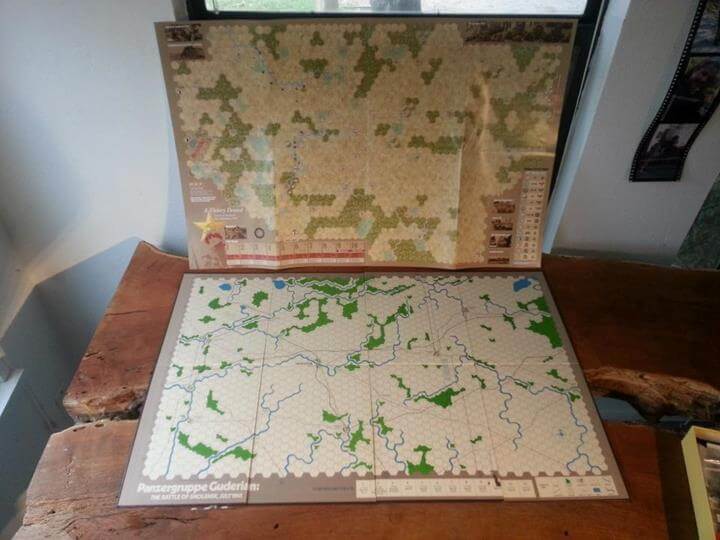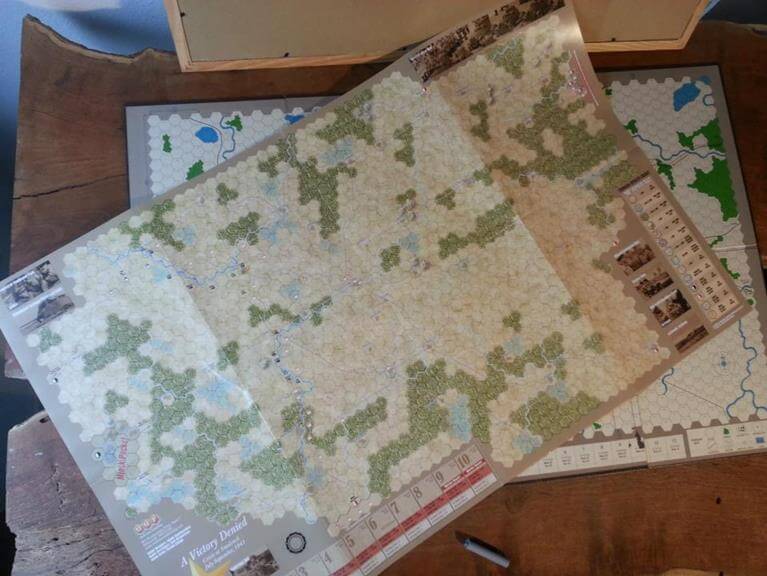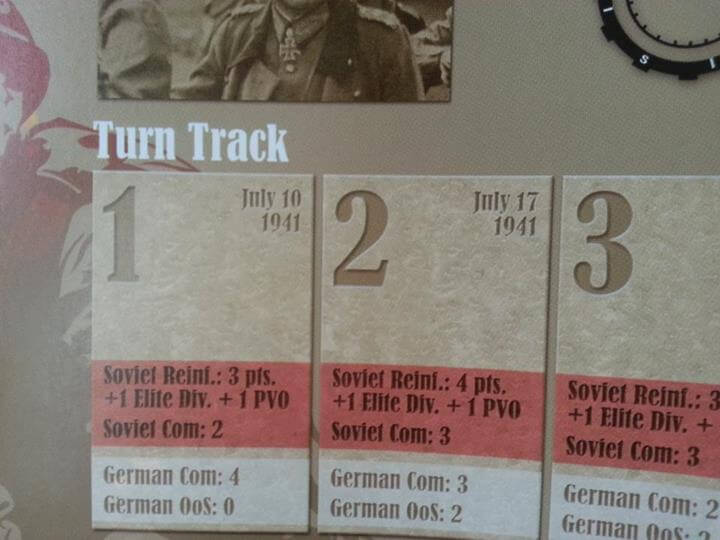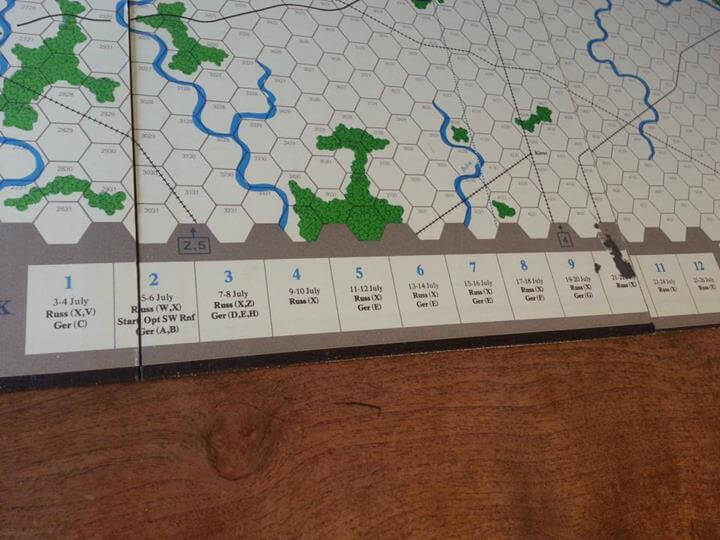When I first thought to play these two titles side by side I imagined that the effort would be nominal and that I would indeed literally play turn about. One turn for AVD, then one for PGG.
That idea is not a good one! Keeping the rules straight and being able to ‘invest’ in the mechanics of each game was lost in that process.
So I elected to play each separately. I am glad I did. In fact I was able to play AVD both solo and versus a VASSAL opponent. This dramatically changes the experience for AVD.
PGG, was a little different, lining up a player locally was not really an option given the time frame and I had a desire to try this one alone first in any case. There is something about games declared “classic” that I want to experience by myself first off then perhaps with another player, at a later date. Most games, especially new ones I like to play for the first time with someone who is also playing for the first time. I like the Ahaaaa moments, and the oh boy this is great…or broken..or whatever. Playing with a person who has ‘worked the strategy’, especially with CDG’s bugs the crud….well never mind. I digress.
There is a wonderfully long and rich article online regarding PGG, its back ground, details, rules, and game play. I’ll post a link to it. the articles are worth a read for first time players.

So let’s look at scale first off. Both games use similar map sizes but the scale is clearly different. The PGG hexes are stated to be 15kms per hex. There is no similar statement on the AVD title. But if we look at the two maps more closely we can see some key differences. I laid both maps over the current topography of the area and the came out pretty close. So despite this little re orientation they represent reality.
Yes, the orientation of the battle map is different. Note also that in AVD it includes Minsk at one end, and Moscow environs at the other whereas the PGG map has neither but stretches further North and South.
Both maps take some liberties with roads, and where forest and rail are in actuality. Most can be forgiven as design for effect efforts. While I am ok with this I wonder just how much designers tweak the map versus a rules clause to inhibit or enhance for terrain. Both pay a price I suppose. In fact AVD has no rail, and thus avoiding the manipulated rail line that PGG uses which wanders around to absorb MP’s. AVD simply allows units to ‘enter’ at various locations, of which most would have been rail linked.
It is interesting in AVD too, that you start the conflict 25% of the way into the map in set positions, whereas all the Germans move on the map in PGG, after the Soviets move from the Western most map edge to defensive positions. This really evokes the feeling of a defensive mobile battle, with Panzers streaming onto the board as the Soviets scramble to create a defense under difficult circumstances. Where as the AVD title feels like a set piece battle, moving to break out mode.
The other scale difference is time. The AVD title stretches from July 10th in weekly increments for a maximum of 10 weeks, more likely 8. PGG is a shorter scale 2 days per turn starting 3rd-4th of July and running 12 turns. or 28 days, making for a very intense conflict in a very short period of time. You can hear the trucks fizzling to a stop, and clips emptying!
The maps both evoke a sense of spartan play. While the color palette on AVD is richer, the stripped down essence of the game is apparent. Of course our older title is done in the mold of the SPI magazine titles art de jour. PGG is simple, effective and pragmatic. It has a beauty all of its own despite the simplicity. I prefer the SPI map as it has less reflection and is generally easier to read. AVD tries to hard to be ‘eastern front soil brown’, a distinct improvement over the horrid colors of AVL, but nevertheless you are left feeling sepia toned! I think MMP can retire that ink color now….
Units both work at similar scales Regiments and Divisions. AVD has the annoying counter art, while PGG has the droll red v grey monastic NATO symbols.
Play mechanics, systems and thingys:
Chit Pull and Command Control.
The first major difference is one that brings such a change to the situation as to make comparison difficult. Clearly an IGOUGO situation is going to feel less dynamic than the random drawing of command chits for each side. AVD uses chits to manage a few things.
Firstly it limits how much the Soviets can do every turn, but ties in command and control and supply elements to the chits also. If the Soviet player keeps tight management of his HQ units (from which we measure command range and activation based upon the chits pulled) then he can move many of his units every turn. Far flung play, or chasing down rogue Germans will cause the Soviet player CnC headaches rapidly.
The second element is that Supply is a chit pull. Thus if it is pulled early, and both sides are well placed then the Soviets are likely to have a harder time of it, however they do then have the ability to declare a certain number of units of the enemy OOS for the turn. A devastating blow early in a turn to the Axis player.

The flip side is that as the turn progress, each side is deep in its move or perhaps part the way thru and bam – there is the supply chit, FUBAR’ing one or the other or sometime s both parties. Soviets are never OOS, just isolated with lesser impact. The third element in chit pull is the ability tied to command and control for Guderian to ‘hot swap’ a chit for his 2nd Corp Panzers to move again. Very powerful and adds an edge to the Germans, that if well managed can allow deep penetration or if the chit pulls come right they can exploit early efforts. The downside here is supply, and isolation. The German player has a limited # of units he can move every turn and a lot of terrain to cover.

In the IGOUGO model we have some interesting things going on as well. For the Germans have a classic second movement phase that provides a similar punch to units as discussed above. While no combat can occur, if well used the Panzers may change direction or maneuver to limit Soviet reaction in their turn or hinder any counterattack.
ZOCS

The games diverge here also. ZOCs are more than sticky in PGG. Once you enter one, you stop. For good. Only 3 events remove you from the eZOC. 1. The enemy dies, 2. You retreat or 3. They retreat. So the decision to enter a eZOC especially as the Germans when you may not know the strength of the enemy is potentially fraught with danger. In a fluid game however, the adroit usage of lower value units to ‘lock’ Soviets in place, or conversely force combat with precious but fragile Panzer formations makes thoughtful play a must.
AVD on the other hand allows units to pay extra for the movement thru eZOCs. Standard fair in many of todays games. This places the onus on the Soviet player to ensure interwoven ZOCs to absorb MP’s for passing thru the ZOC.
Untried Units

Both games use untried unit concepts. The PGG solution being a first of its kind, is stunning to me. All Soviet units fall within a given range, and what they are is unknown to both sides until the battle takes place. There has been controversy and extended discussion over 0 combat value units, with some folks insisting a house rule to make all 0’s equal 1 in defense. Untried units arrive in AVD via pulls from a cup as part of the reinforcement pool. A nice touch and a nod to the PGG system, while giving the Soviet player just a tad more control in an already dynamic situation.
Supply

In AVD supply is asymmetrical. The Germans can be both OOS and isolated whereas the Soviets can only ever be isolated and may never die from that isolation. PGG is more brutal, it’s a 20 hex or 20mp count back to the one road leading west off map. If that is cut, you are toast. In fact ignoring that my first play, I had a debacle and had to reset.
Movement
The dual movement of the Germans in PGG, versus the AVD ‘hot swap’ a chit for 2nd Panzer are 2 very different mechanics that really change how each German player in each game approaches the game. Knowing you have a second move each turn allows you to plan ahead. Not being sure WHEN that second move will come or IF you should take it makes for challenging decisions cycles at various points in the flow of a turn.
Combat
Lets face it…..AVD playing the Soviets, you are not attacking unless you get extremely high odds. So expect to take a beating all game. The CRT using a 1d8 versus a 1d6 for the Germans limits the Soviet options to isolated units, and massed attacks, at the expense of an already thin set of inter woven ZOCS!
Whereas in PGG the Soviets can attack once they know the unit strengths. Sometimes with surprisingly good results. Similarly the Germans pack a punch, complete divisions acting in concert are doubled, and column shifts apply for various modifiers. It is interesting to note that AVD used column shifts as a well versus die roll mods. The Russians have incentives to kill tank units and get in the fight as losing one unit from a division removes the doubling bonus.
VC’s

AVD with it lineage tied to PGG uses a similar VP metric for its final result; with a twist. Where the PGG players are battling for VPs captured across the board in a straight open count, AVD uses a hidden VC value per city graded at 3 diffeent levels of potential value + points for killing each other’s tank units. Results can vary widely. I encourage you to not even look at the value of the chits in AVD, and have at it. Otherwise you will be working percentages the entire time, to no avail until the counters are flipped at games end.
Which is better?
Neither. Given my dislike for A Victory Lost, I was pleasantly surprised about AVD. Playing both solo and via PBeM really was a blast. For all the talk of Spartan gaming by disgruntled designers, I really think that AVD shines where it matters most, more on that in a second. Rules are errata free that I know of, whilst not ‘perfect’ they are succinct and well documented. The map and counters are good but not awesome, and the game clearly honors its roots.
AVD shines most in 2 key areas – chaos and decision making. By this I mean that while at the end of each turn, you may swipe your brow and thank the stars you got away with another turn, you then tighten up again as you elect which chits to take, looking at the board, wondering if you moved that HQ to just the right spot. All the while not knowing if the enemy will move first, and second and third? Or whether or not your plans will be dashed by the Air /Arty /Supply or reinforcement chit pulls. This makes for lots of replay value and intense experiences.
PGG is a classic for a reason. In an era of new designs and a new market growing from the seeds of Avalon Hill, this SPI magazine game blew open the doors with innovative mechanics, unknown units, and clever game structure. Its rules are also clean, precise and organized. The replay value is high, but perhaps not as high as AVD. The production quality in some regards is better. Not shiniest, but very clear maps, the focus is on game play. Remember this is a magazine game! Here the thoughtfulness in the way ZOCs are used, the exploit move phase, and combat systems really make PGG a game that once you understand the little system, it has a real nice ‘groove to it’ especially as the German player. The Soviets as in AVD, must hang on, preserve force, trade space for time and prevent that massive breakthrough.
Two very different experiences in two compelling games separated by decades from 1976 (Jim Dunnigan) to 2009 (Adam Starkweather). One is a classic now; one might earn that mantle in the future.

http://www.boardgamegeek.com/boardgame/31954/a-victory-denied
http://www.boardgamegeek.com/boardgame/3041/panzergruppe-guderian





Can’t express how much I enjoy your blog mate… check everyday for something to read..
cheers thanks dude! That means a lot.
I definitely love both games. Smolensk is a campaign that has–until recently–eluded a great many Eastern Front scholars. When PGG came out in 1976 I was convinced that here we saw the reason why the Germans could not win BARBAROSSA; between two equally skilled players, the front lines usually stabilized somewhere around Smolensk and Roslavl. Lunges to Vyasma and Rzhev were relatively rare. To me, what makes AVD special is that the German isn’t really sure what victory condition is going to apply–either go for Moscow or divert forces to close the Kiev pocket–and must be prepared to do either. That, coupled with the conundrum of how much to guard the pocketed Soviets around Minsk–replicates the tense dilemmas/decisionmaking that faced von Bock, the Army Group Center commander. AVD more faithfully simulates those sticky issues that the von Bock faced–better than PGG.